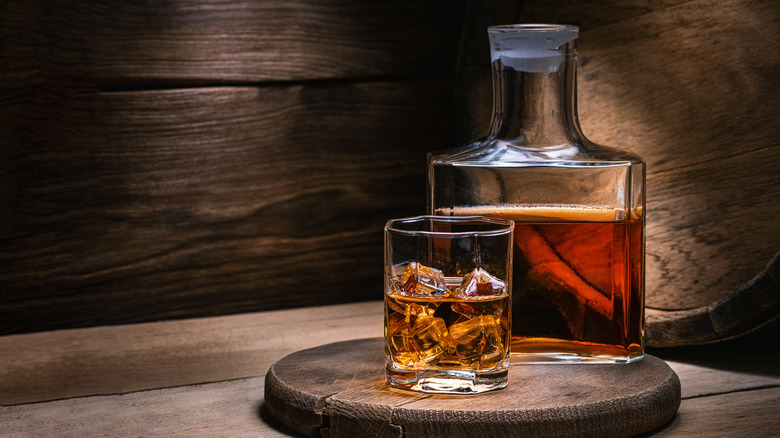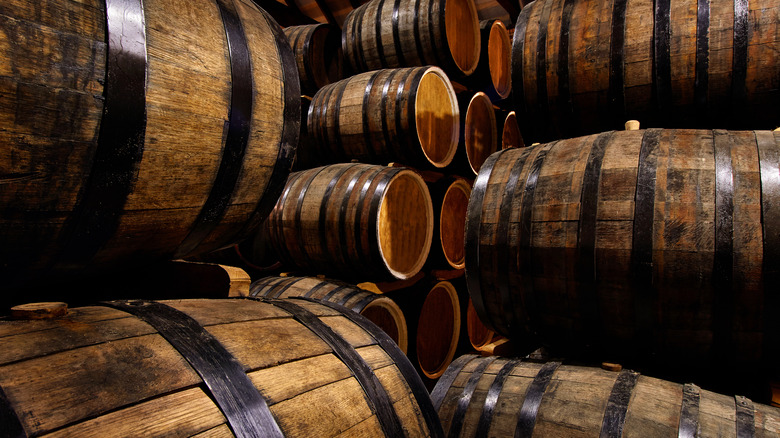Why Dwindling White Oak Numbers Could Be Disastrous For US Whiskey
When it comes to aging whiskey, distilleries have a penchant for selecting oak barrels. According to Rocky Mountain Barrel Company, whiskey producers consider oak the best wood to use for the aging process because it contains certain compounds that add spice and additional flavors to the spirit. Some prefer to use European oak, which adds spice, vanilla, and wood notes to the flavor, while others like Mongolian oak that lends the flavors of vanilla, coconut, spicy rye, and sandalwood to the final product. Overall, most distilleries prefer American white oak due to its affordability, its ability to imbue whiskey with notes of vanilla, caramel, and coconut, and its tight cell structure.
American white oak barrels rank as a top barrel type due to these attributes, per Harlem Standard. Thanks to its popularity, foresters and whiskey companies need to constantly replant this type of tree in order to meet the demand of spirit connoisseurs. Climate change and adverse weather conditions particularly affect the growth patterns of this tree, and as a result, organizations like the White Oak Initiative came to be in order to protect the trees and ensure they stay readily available (via Food & Wine). Despite the preservation methods used for years to keep the supply steady, American white oak trees now appear to face imminent danger.
An unclear future for the popular wood
According to Food & Wine, experts now worry that this tree isn't regenerating at the rate that it needs to in order to meet consumer demands. Demand for whiskey has currently outpaced the growing rate of the trees, and when economic demand meets less-than-ideal growing conditions, botanical diseases, and a growing threat from insects, it looks like American white oak growth has some major problems ahead. Additionally, 75% of the trees classify as mature, casting enough shade on young American white oak to stunt their growth. The land that the trees grow on also are owned by a variety of individuals who maintain their forests through their own practices, preventing standardized preservation methods. Experts believe the landowners need incentives to preserve this species, or else consumers might see a marked downtick in productions of this type of wood.
Only time can tell what happens next to American white oak forests and the whiskey market. On the current trajectory, the future of this wood looks bleaker-than-normal and anyone who enjoys sipping on American white oak-aged liquor needs to keep an eye out for developments regarding this situation.

